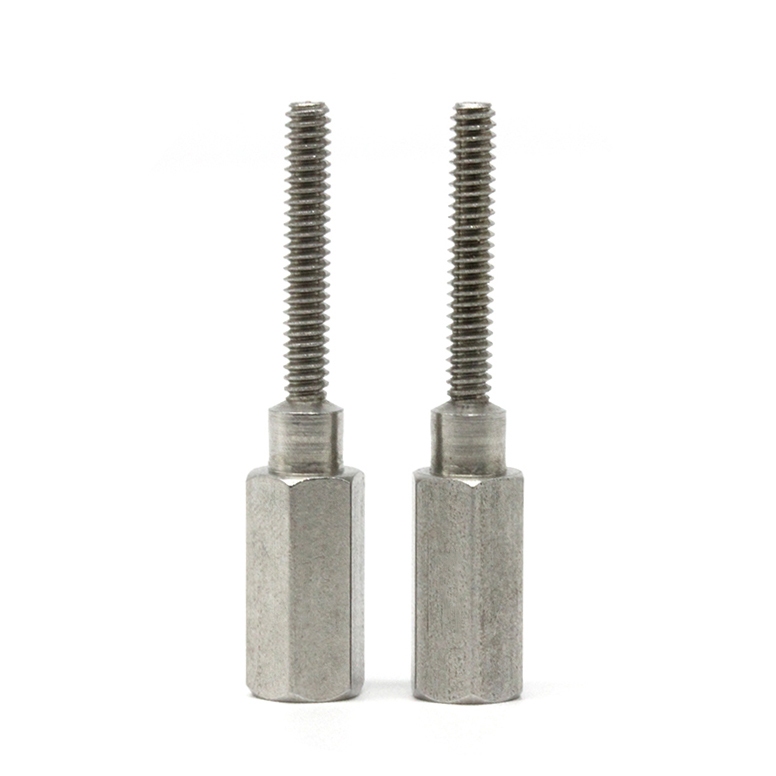
Stainless steel standoffs are precision-engineered fasteners designed to create space between two mounted components while providing robust structural support. These cylindrical spacers typically feature male-female threading (ranging from M2 to M12 metric threads or #4-40 to 1/2"-13 UNC/UNF imperial threads) and are manufactured from high-quality austenitic stainless steel grades, mainly 304 (1.4301) and 316 (1.4401), known for their superior corrosion resistance and mechanical strength.

Grade 304 Stainless Steel: Contains 18-20% chromium and 8-10.5% nickel, offering excellent corrosion resistance in most environments.
Grade 316 Stainless Steel: Includes 2-3% molybdenum for enhanced resistance to pitting and chloride corrosion, ideal for marine and chemical applications.
Tensile Strength: Ranges from 515-690 MPa for 304 grade and up to 827 MPa for 316 grade.
Yield Strength: Approximately 205 MPa for 304 and 240 MPa for 316 stainless steel.
Continuous service temperatures range from -200°C to 800°C, with intermittent exposure possible up to 925°C without loss of structural integrity.
Standard finishes include #4 brushed finish (Ra 0.4-0.8 μm) or polished finish (Ra ≤ 0.2 μm).
Optional passivation treatment per ASTM A967 enhances corrosion resistance by forming a protective oxide layer.
Manufactured to ±0.05 mm concentricity tolerance and ±0.1 mm length tolerance, ensuring precise alignment and fit.
Volume resistivity of 0.73 μΩ·m at 20°C makes stainless steel standoffs suitable for grounding and electrical shielding applications.
Our stainless steel standoffs are fabricated using advanced CNC machining technology, ensuring:
Precision turning and threading to meet ISO metric and UNC/UNF thread standards.
Passivation to boost corrosion resistance and surface quality.
Rigorous inspection with Go/No-Go thread gauges and coordinate measuring machines (CMM).
Various surface finishes including polishing, black oxide coating, or customized treatments as requested.
Provide 3-10 mm clearance for heat dissipation in PCB mounting.
Serve as EMI/RFI shielding components through continuous metal contact.
Used in server racks with M6 standoffs supporting up to 500N axial load for heavy equipment.
Employed in structural glazing with M10-M12 316L stainless steel standoffs, able to withstand coastal corrosion.
Comply with European Standard EN 1993-1-4, transferring wind loads up to 3.5 kN/m².
316LVM standoffs compliant with ISO 13485 for surgical tools and implants.
Surfaces electropolished to Ra ≤0.15 μm reduce bacterial adhesion, ideal for autoclave sterilization.
Railway applications use standoffs meeting DIN 5510-2 fire ratings.
Marine applications require ASTM F593 compliance for exposure to saltwater.
Food processing equipment utilizes standoffs certified by 3-A Sanitary Standard 18-03, featuring radius corners and full penetration welds for hygienic design.
Aerospace, optical equipment, and any environment demanding high corrosion resistance and mechanical strength.
Routine cleaning with isopropyl alcohol (70-99%) and lint-free wipes.
For marine environments, remove salt deposits using a 5% acetic acid solution.
Re-passivate every 12-24 months with 20-50% nitric acid following ASTM A967 Method C.
Conduct quarterly inspections verifying:
Thread engagement ≥ 1.5× nominal diameter.
Absence of visible crevice corrosion (ASTM G78).
Torque values within ±10% of installation specs.
Replace standoffs if:
Pitting exceeds 0.1 mm depth (ASTM G46).
Thread deformation is greater than 15% of pitch diameter.
Evidence of galvanic corrosion between dissimilar metals.
For threaded parts, apply:
Molybdenum disulfide (MoS₂) grease for high temperatures above 400°C.
PTFE-based lubricants for food-grade and sanitary environments.
Maintain lubricant film thickness of 25-50 μm.
Q1: What thread sizes are available for stainless steel standoffs?
A1: We offer metric threads (M2–M12) and imperial threads (#4-40 to 1/2"-13 UNC/UNF), with custom sizes available.
Q2: Are these standoffs suitable for marine environments?
A2: Yes, especially 316 stainless steel standoffs, which provide superior chloride and saltwater resistance.
Q3: Can these standoffs be used in medical applications?
A3: Absolutely. We provide 316LVM standoffs with electropolished finishes compliant with medical sterilization standards.
Q4: How often should maintenance be performed?
A4: Cleaning and inspection should be done quarterly, with passivation every 1-2 years depending on the environment.
Q5: What surface finishes are available?
A5: Standard finishes include brushed (#4), polished, passivated, and black oxide coatings. Custom finishes are also possible.